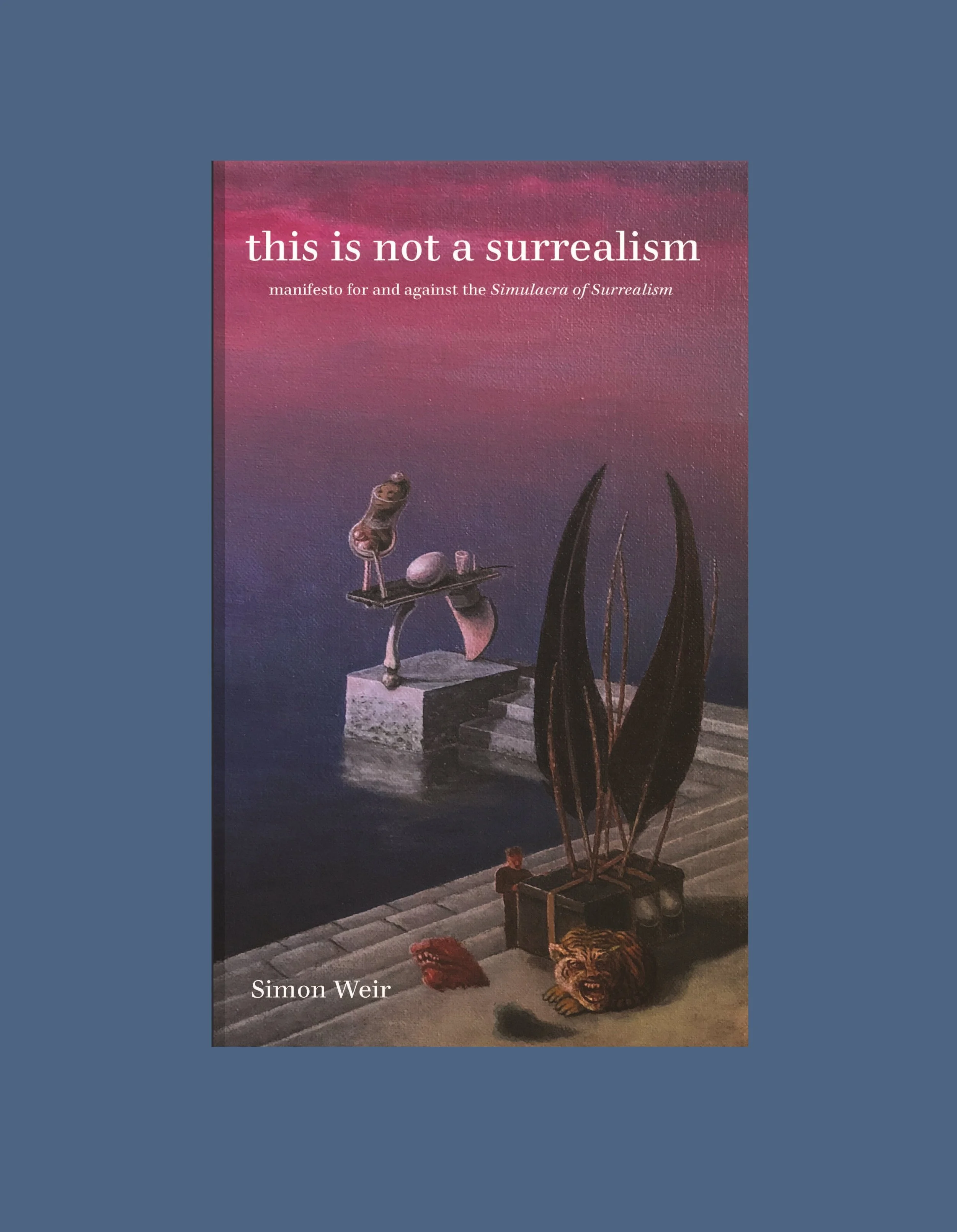this is not a surrealism by Simon Weir
this is not a surrealism by Simon Weir
About the book
The book begins by asking, “Why do dreams appear real?” How can you tell if an image is a depiction of reality or a depiction of a dream. This manifesto argues that the challenge we encounter when attempting to recognise the qualities of a dream in the depiction of a visually realistic dream, also permeates our perception, and our presumptions about what reality really is. Surrealist art, of the kind advocated by this manifesto, engages precisely with this ambiguous space between the reality “out there” and simulacra of reality we nurture within ourselves.
The book positions itself as a manifesto updating surrealism through philosophical and psychological insights. Drawing from thinkers like Heraclitus and Kant, alongside surrealist artists such as Magritte and Dalí, it makes complex ideas accessible to modern readers while offering new interpretations of surrealist motifs.
A key critique is levelled at Michel Foucault’s reading of Magritte’s The Treachery of Images—the famous painting of a pipe with the words "this is not a pipe" below it. The author argues that Foucault’s interpretation, which sees the painting as a disruption of representational art, misses a deeper point about the paradoxical nature of reality. The painting shows how an object can be both itself and not itself, revealing a profound philosophical truth about the coexistence of contradictions.
The concept of simulacra—representations or copies of reality—plays a major role in surrealist art, posing challenges such as how multiple versions of reality can exist simultaneously. Surrealist art, particularly that of Dalí, forces viewers to confront their simulacra, destabilising their sense of quotidian reality and revealing how reality and imagination are intertwined.
Surrealist techniques like juxtaposition do more than create surprising contrasts. They evoke emotional responses by revealing deeper connections between seemingly unrelated objects. Surreal dreamscapes, where real and unreal objects coexist, challenge our understanding of time and space.
Ultimately, surrealism’s methods of accessing the unconscious—through techniques like psychic automatism and paranoiac association —uncover hidden realities and contradictions, urging viewers to embrace mystery, reject conformity, and explore the profound complexities that lie beneath everyday perceptions.
About the author
Simon Weir is a figurative surrealist updating surrealism in light of contemporary research in psychology and philosophy. He is a member of the International Journal of Surrealism’s editorial collective, and regular speaker at the annual conference of the International Society for the Study of Surrealism. Weir has published research on surrealism in leading scholarly venues including the Journal of Surrealism and the Americas, Dada/Surrealism, Open Philosophy and RIBA’s The Journal of Architecture, and is an Associate Dean at The Sydney School of Architecture, Design & Planning at The University of Sydney.
Weir’s visual art practice uses both ultra-new technologies like AI and construction robotics, and the ultra-traditional techniques of drawing and oil painting. In 2024 Weir was invited to lecture at The Art Gallery of NSW - Sydney’s largest public art gallery - on their large René Magritte retrospective. And since 2024 was the centenary of André Breton’s first Manifesto of Surrealism, Weir prepared for the occasion a new manifesto for and against contemporary surrealism.

